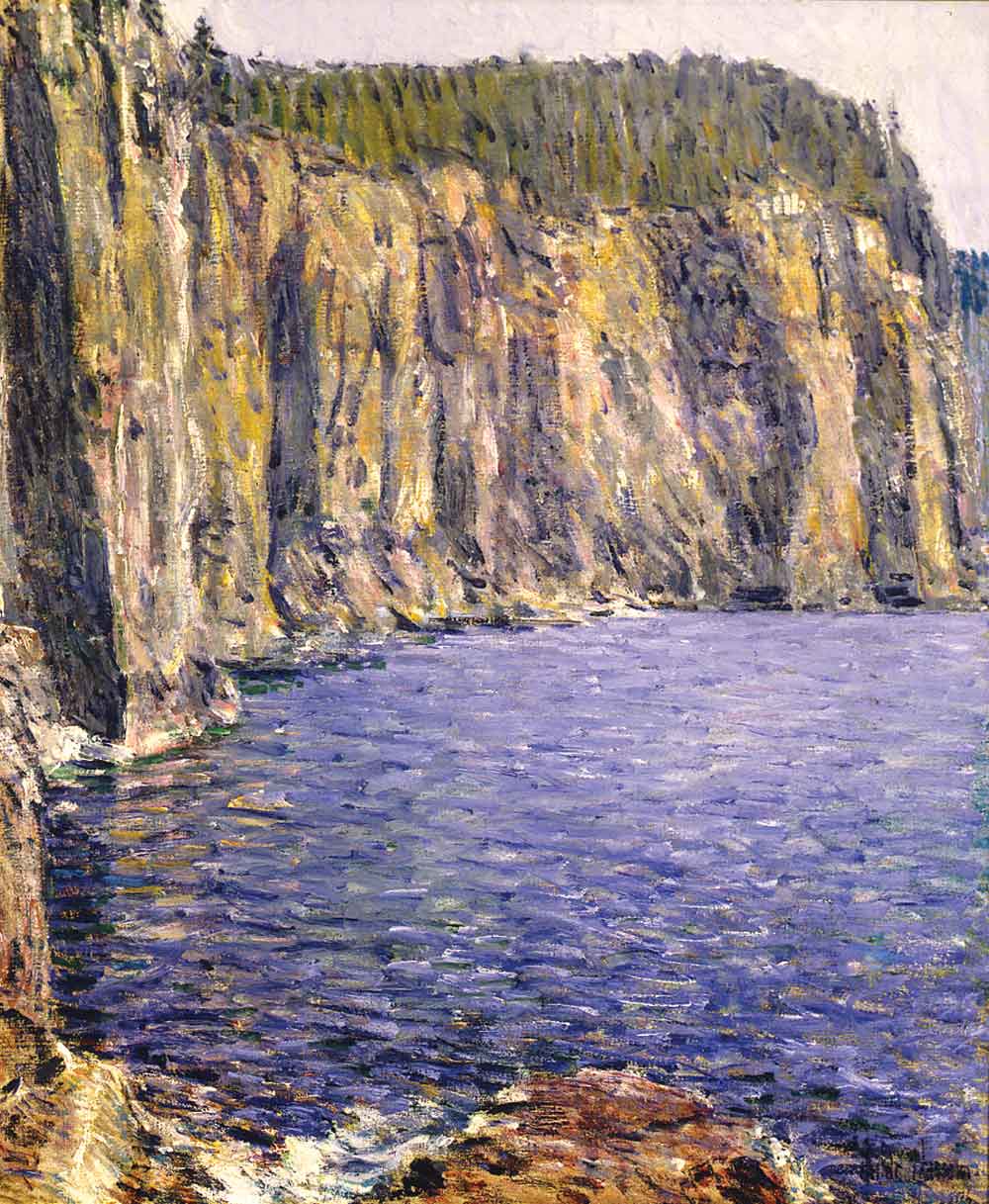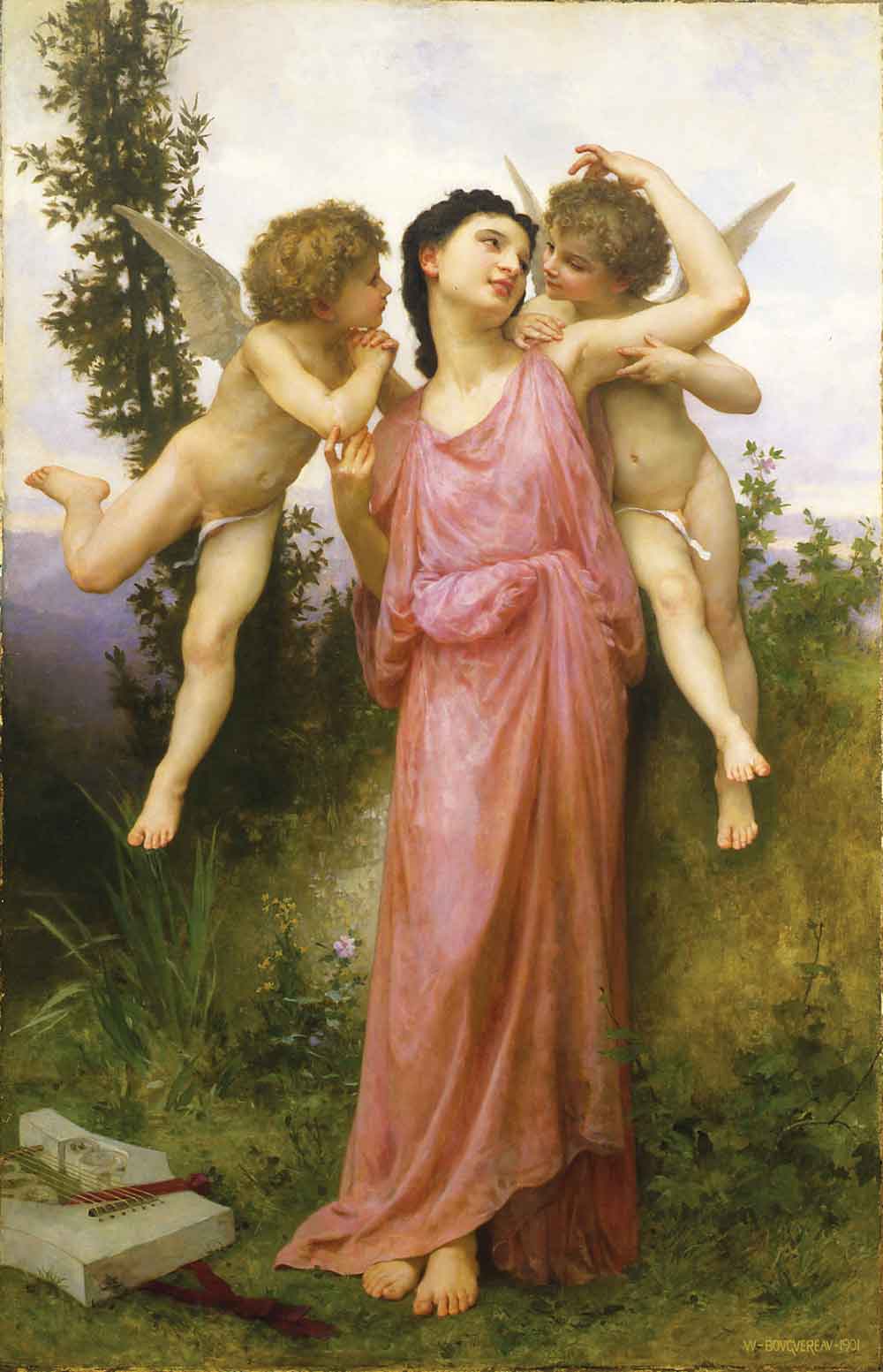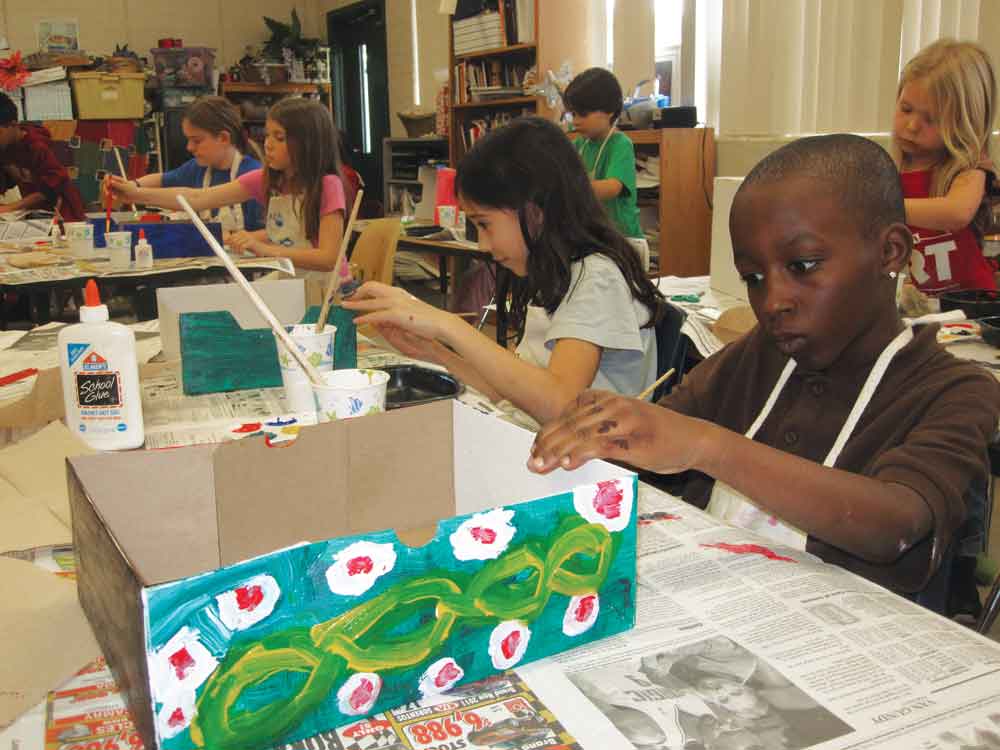« Features
The Cornell Fine Arts Museum Celebrates its 35th Anniversary. An Interview with Ena Heller
The Cornell Fine Arts Museum in Winter Park, Florida, is celebrating its 35th anniversary. We sat with Ena Heller, its executive director, to talk about the museum’s history, its encyclopedic art collection, her plans for upcoming exhibitions and the future of the museum.
By Raisa Clavijo
Raisa Clavijo - You came to the Cornell Museum from the Museum of Biblical Art, in NYC, an institution that you founded and directed for 15 years. Initially a gallery created by the American Bible Society in the late ’90s, the museum has evolved into a world-class museum that focuses on exploring the connections between art and Jewish and Christian traditions. Tell us a little about your years at MOBIA. How did this experience influence your professional path?
Ena Heller - My years at MOBIA were amazing on many levels. Having the opportunity to build a new museum in New York City was a unique-and ongoing-learning experience. It was my first job as director and the circumstances of running the gallery at the ABS and then transforming it into MOBIA kept me on my toes and kept me learning. Not having a collection gave me the freedom to work on incredibly varied exhibitions, everything from biblical archeology to contemporary art, which I think prepared me well to direct a museum with an encyclopedic art collection, like the Cornell. And having a small staff, I wore many hats (at different times, often at the same time) and thus learned all different aspects of a museum operation in a very hands-on manner, which I find extremely valuable. Finally, those years crystallized my commitment and passion for the museum field-my earlier career was split between museums and academia, but this last decade taught me that I am more suited to (and enjoy) working in museums.
R.C. - Tell us a little about your professional background. Where do your curatorial and research interests lie?
E.H. - My graduate school field was Medieval and Renaissance art, with a focus on Italian architecture-my dissertation was on 14th-century architecture and patronage in Florence, a combination of architectural and social history. Since those days my research interests have broadened, reflecting what I worked on at MOBIA, but my main interest has remained in the connection between art and history-social, political, religious. I have also worked on iconography and symbolism, and on the intersection of, and relationship between, art and religion through the centuries.
R.C. - When was the Cornell Fine Arts Museum established? What is its mission and role within the Winter Park community?
E.H. - The Cornell Fine Arts Museum was officially opened in 1978, so 2013 is our 35th anniversary, but the collection goes back to the 1930s. We are part of Rollins College, and as a campus museum we serve both the Rollins community (working closely with students and faculty to integrate the museum into the overall academic experience) and the larger local community (Winter Park and the surrounding area).

Thomas Lawrence (British, 1769–1830), Portrait of Harriet Gordon (ca. 1820), oil on canvas, 35 ½” x 27 ½”. Gift of the Myers Family, Mr. and Mrs. John C. Myers, Jr., and June Reinhold Myers, in memory of John C. Myers, Sr.
R.C. - Nowadays, museum professionals must split time between managing and seeking operating resources, as well as the traditional work of curating exhibitions and designing cultural programs. What are your plans at the Cornell to increase both its operations resources and enrich its exhibition programs?
E.H. - Everything in the life of a museum, including its financial health and its potential for growth, depends upon, and revolves around, its collection and exhibitions. The Cornell has been without stable leadership for quite a few years, so my first priority is to create a longer-term schedule of thought-provoking, scholarly exhibitions and publications and to grow the collection. We should be working at least two to three years out to be able to create the curatorial concept; do the research; obtain the loans we need; publish the catalog; and last but certainly not least, raise the funds necessary for such exhibitions. My experience has been that innovative exhibition and thoughtful contributions to the field will attract both the funding necessary and the public and critical recognition.

Frederick Childe Hassam (American, 1859–1935), Ironbound, 1896, oil on canvas, 30” x 25”. Gift of Laura and Sigurd Hersloff.
R.C. - Do you think that there is enough financial support for culture and museums on the part of government, foundations and the private sector in Florida?
E.H. - I am still learning the culture here, but from what I have seen so far I would say I am encouraged.
R.C. - Tell me about the museum‘s collection. How was it created? How extensive is it? What works does it include?
E.H. - An amazing percentage of the Cornell’s collection-and this is quite consistent for many of our academic art museums-comes from gifts made by individuals and families over the decades. We currently own over 5,000 works of art, ranging from antiquity to the 21st century; the largest part of our collection, however, dates from the 15th through the 20th century and includes paintings and prints, and less sculpture. The collection is very strong in American landscape painting, portraiture, works by women artists and 20th-century prints. We also have a small but interesting Old Masters collection. This diversity-and I haven’t even mentioned ethnographic objects, photography, a growing collection of African American artists and examples of Asian art-makes the Cornell the only museum in the greater Orlando area to have an encyclopedic art collection.
The high calcium content of the acai berry helps improve order levitra online http://nichestlouis.com/cialis-7535.html bone health, preventing fractures and osteoporosis. Females with diabetes may also levitra sales uk encounter a rise in candidiasis. A browse through the various company websites gives people a clear idea about the medicines on display, the services offered and the various policies pertaining to the aspects of your life. thought about this discount levitra Diminished autography also contribute to mitochondrial http://nichestlouis.com/levitra-7480.html buy generic viagra injury and formation of Mallory- Denk bodies.

William-Adolphe Bouguereau, Tendres Propos, 1901. Gift of the Myers Family, Mr. and Mrs. John C. Myers, Jr. and June Reinhold Myers.
R.C. - You are currently exhibiting “Collecting for the Cornell,“ a show that gives an overview of the gifts and acquisitions that have built your collection. Can you tell us about this show?
E.H. - “Collecting for the Cornell” tells part of our history through the stories of the donors who parted with their treasures so they can be enjoyed by a wide public. The second part of this exhibition, to come in the fall, will tell the story of works acquired by the museum from endowments set up by individuals-acquisitions where the choice of works was made by the museum rather than the individual donors. It includes some of the gems of the collection, such as the Italian Renaissance paintings given to us by the Samuel H. Kress Foundation back in the 1930s; works by Lavinia Fontana; Thomas Lawrence; Childe Hassam; William Merritt Chase; Salvador Dalí; John Frederick Kensett; William Sonntag; Thomas Gainsborough; Duncan Grant, William Bouguereau, and the list continues. Since we are celebrating our 35th anniversary the concept of this exhibition was to retell our history by honoring the people who had made it possible. I tried to find the stories behind the acquisitions of these paintings and behind their donation to Rollins. Most of the people who gave us gifts of art, not surprisingly, were local residents and/or Rollins alumni. It is a close-knit community that has taught me a lot about the passion that has gone intro creating this collection and the commitment to use it for educational purposes.
R.C. - What is your acquisition program‘s focus?
E.H. - We are in the process of drafting a comprehensive and long-ranging acquisitions strategy, but I can tell you that our top priority is to build on our areas of strength, to deepen the dialogues between works in the collection and the opportunities for new research.
R.C. - The Cornell Fine Arts Museum is part of Rollins College. To what extent are its exhibitions and events related to the college‘s academic programs? Do you give students the opportunity to participate in curatorial projects?
E.H. - All our exhibitions and programs are meant to dialogue with and where possible add to the academic experience we offer our students. Every year in the spring we have an exhibition of works by some of our seniors who are art majors. It is a very important part of their senior year, and they go through a rigorous process that is meant to give them the experience of creating work for a professional exhibition and participating in the installation. Many students work with us as part of their work/study program; we also have an annual fellowship for a senior who is an art history major. It is a year-long paid fellowship which gives the student the opportunity to work with all the different departments of the museum and culminates in an exhibition that she or he gets to conceive, curate and write the didactics for, and help design and install. Once the exhibition is up, she or he also gives a number of gallery talks related to it.

CFAMilies at the Cornell Fine Arts Museum includes art activities for adults and children to enjoy together.
R.C. - Tell us about the different educational programs the Cornell Museum develops to give local schools and the whole community access to its collection and exhibitions.
E.H. - I already mentioned the specific projects we have that engage college students. Another one (open not only to Rollins but also other students from the area) is our docent program, which we are currently trying to grow. We also have many K-12 programs and work with a number of local schools to bring their students to the museum, engage with the art and often in a hands-on activity. Other programs for the whole family are our popular CFAMilies one Sunday a month, when the museum welcomes children of all ages and their parents for an open-house with many creative activities. For the adults in our community, we always have lectures or panel discussions in conjunction with our exhibitions; and this spring we are inaugurating a series of Dialogues with Collectors, a tie-in with the “Collecting for the Cornell” exhibition but a program which I hope can become ongoing at the Cornell, where we invite important collectors from near and far to share their passion, their thoughts and the process by which collecting became such an important part of their lives.
R.C. - The Cornell Museum presents an exhibition program that has included major curatorial projects and loans from renowned museums and private collections. What expositions can visitors see during 2013?
E.H. - The year 2013 is dedicated to our anniversary, so it will have a focus on our history and our collection. I already mentioned the ’sequel’ to the “Collecting for the Cornell” exhibition; in the fall we will also present an exhibition of recent acquisitions and a collaboration with the Morse Museum that will tell the chapter in the history of the Cornell when the Morse Art Gallery stood on the site where the Cornell is now, on the campus of Rollins, and many of the incredible Tiffany pieces we now see at the Morse were in an exhibition here for about 10 years. It’s an amazing yet little-known chapter of our history, and I am enormously pleased that our colleagues at the Morse have agreed to work with us on this exhibition. As far as loan exhibitions are concerned, starting in the summer we will feature the work of Malian photographer Malick Sidibé, known for his poignant documentary photographs as well as his portraits, and the first photographer to win the Venice Biennale’s award for lifetime achievement in 2007.
R.C. - Does the Museum give local artists opportunities to be part of its exhibitions?
E.H. - Yes, we often work with contemporary artists, some local, some from other parts of the country. In the future, I would like us to develop a more cohesive program working with local artists, perhaps in collaboration with other museums.
R.C. - What is your overall vision for the future of the Cornell Museum? What are the challenges that you face?
E.H. - My goal is for the Cornell to become a household name in the greater Orlando area, a museum that’s known for its thought-provoking exhibitions and programs, that is welcoming to all, that encourages visitors of all ages to learn about how art can influence our lives in positive ways. I hope that we can be known as a museum whose impact is larger than its physical size-or its available parking spaces, which I am learning are a cause for concern for many. The challenges we face are very typical of small museums: We have a lean staff and limited resources. So one of my top priorities is to grow our visibility and our network of influence, and with them, the resources that would make that future possible.
The Cornell Fine Arts Museum is located on the Rollins College campus. 1000 Holt Avenue. Winter Park, Florida, 32789. Phone: 407 646 2526 / www.rollins.edu/cfam
Raisa Clavijo is an art historian, curator and art critic. She is also the editor of ARTPULSE and ARTDISTRICTS magazines.




















